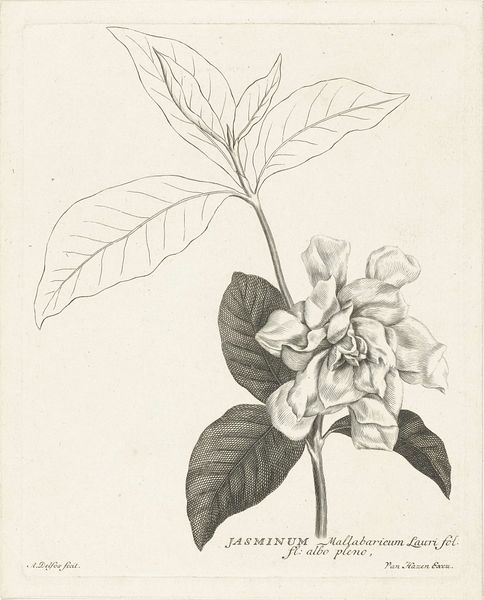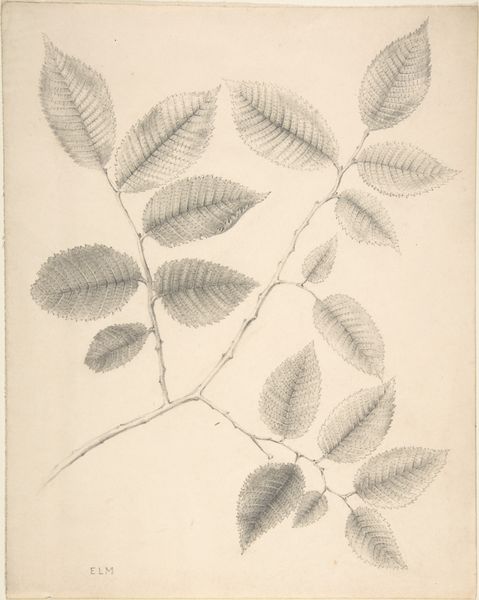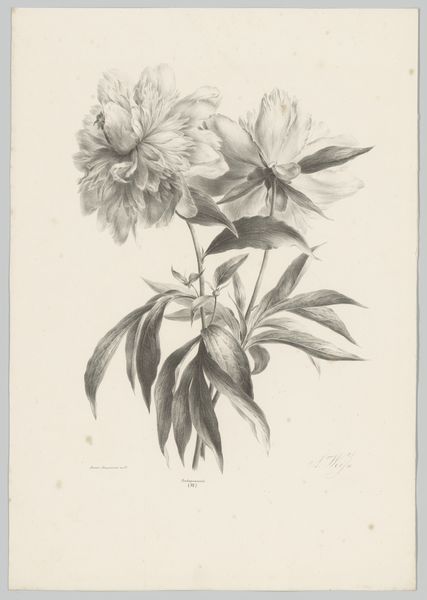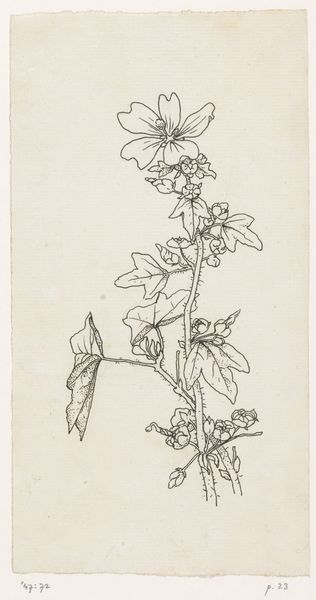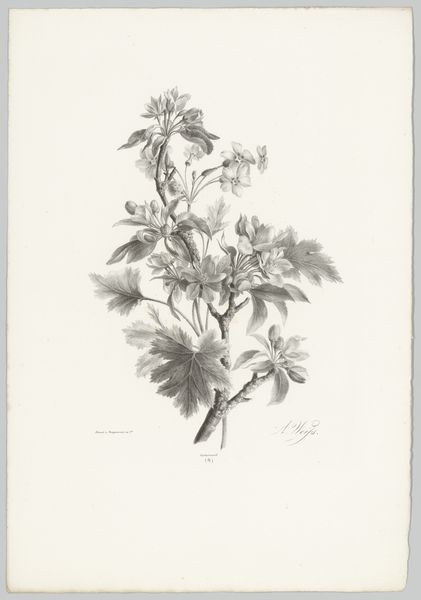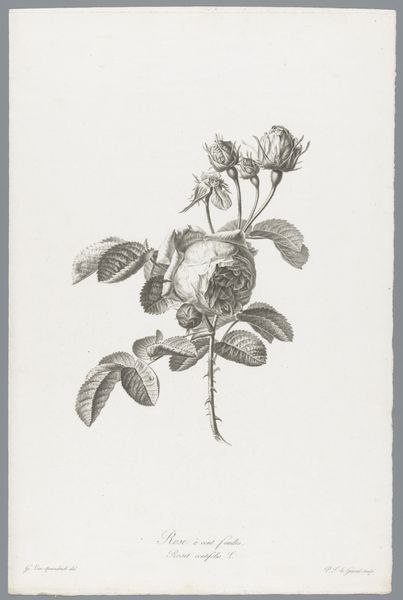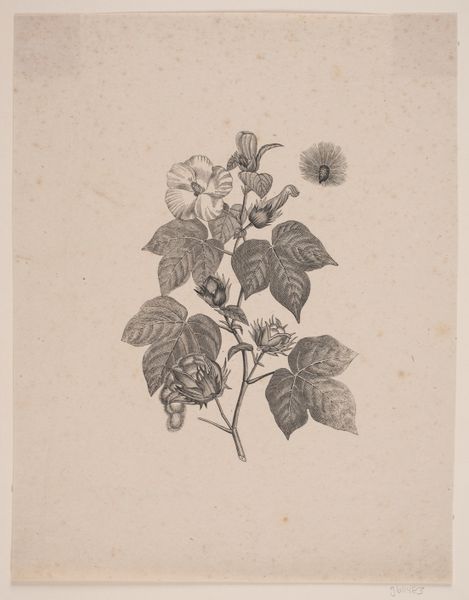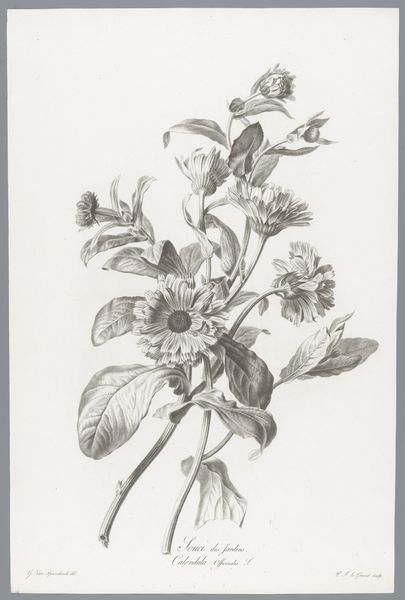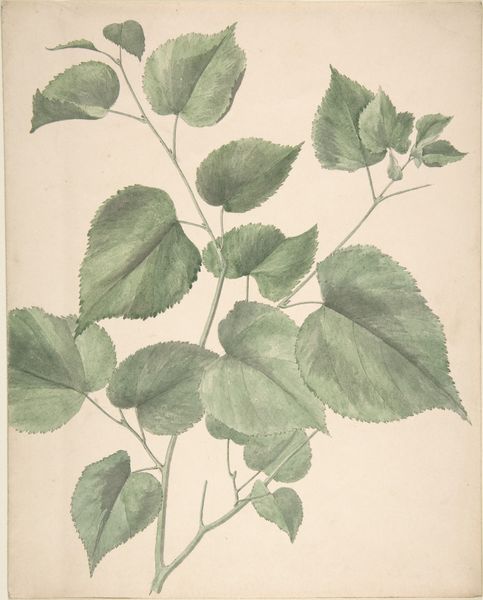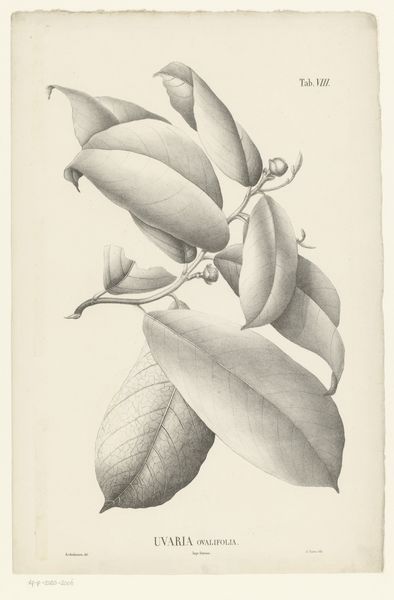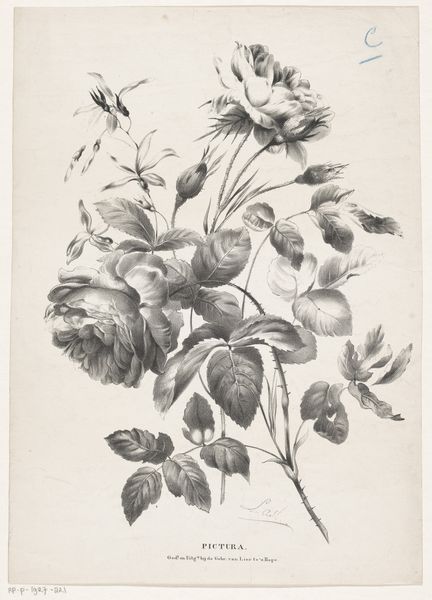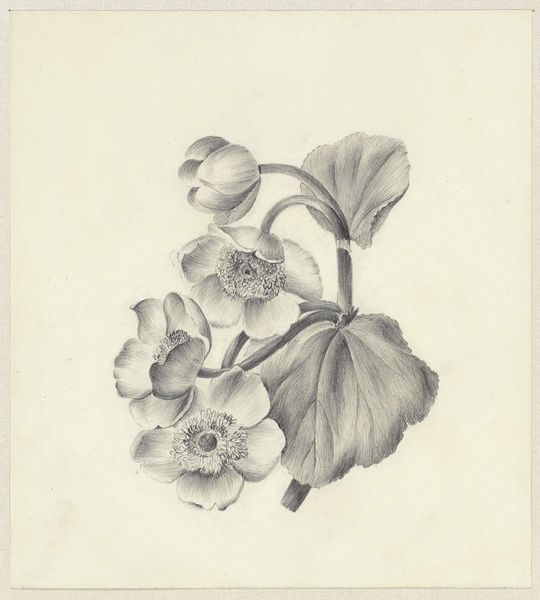
drawing, pencil
#
drawing
#
pen sketch
#
landscape
#
pencil
#
realism
Dimensions: Sheet: 11 13/16 × 9 7/16 in. (30 × 24 cm)
Copyright: Public Domain
Curator: We're looking at "Leaves and Flowers," a drawing that resides here at the Metropolitan Museum of Art. Created sometime between 1800 and 1900, the work is by an anonymous artist using pencil and pen to capture their observations. What are your initial thoughts? Editor: I’m immediately struck by its delicacy. The light grey pencil strokes and bare composition convey a sense of fragility, and a yearning for simplicity outside industrial modernity. Curator: Yes, considering the period, that search for the authentic and natural is an important lens. These types of studies are very much entrenched in an attempt to display nature, reflecting socio-political ideals of that time. Remember, many art academies focused on accurately replicating reality. Editor: I see that aim for faithful rendering. The veining in each leaf, the way light is implied... It feels so meticulous. Were such drawings purely technical exercises? Curator: Not entirely. There was also a growing interest in botanical illustration as a means of cataloging and understanding the natural world. Art became linked to colonial sciences such as botany and taxonomy. These practices played roles in colonial projects around resource extraction and classification that, even today, generate complex legacies of environmental exploitation and cultural dominance. Editor: That places it within a context of control and categorisation. Suddenly, the delicate lines appear less innocent and more loaded with a desire to dissect and control the natural world. It's no longer a simple appreciation but embedded in the era's political motives. Curator: Precisely. The image reflects not just objective reality but the socio-political ideas projected onto the plant. The drawing now becomes a tool in constructing our relationship with our surroundings and it subtly encourages control of our ecosystem, so as an activist, I implore that we continue these conversations that can expose the complex ideologies interwoven into what appears to be simply 'art'. Editor: I agree. Looking at it again, understanding this, reveals layers I wouldn't have noticed. It transforms a seemingly straightforward sketch into a potent statement on the historical relationships that surround it. Thank you, this exercise reframed the way I viewed this subtle work.
Comments
No comments
Be the first to comment and join the conversation on the ultimate creative platform.
